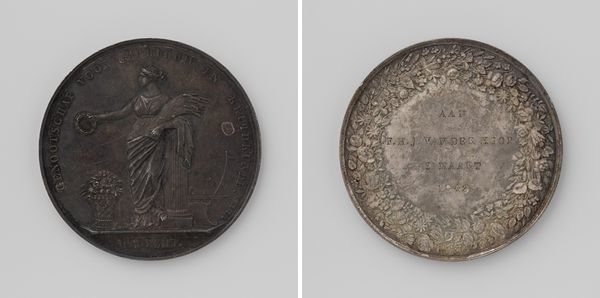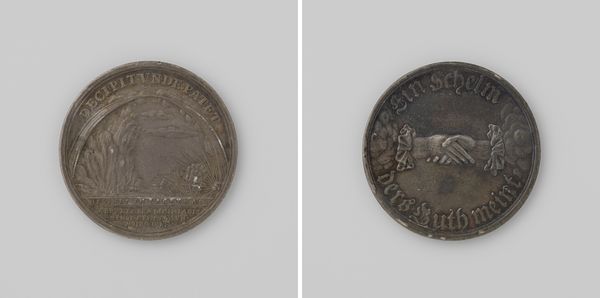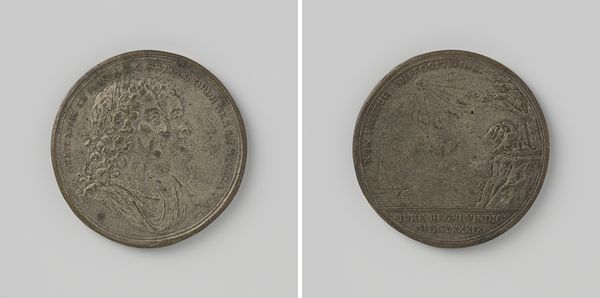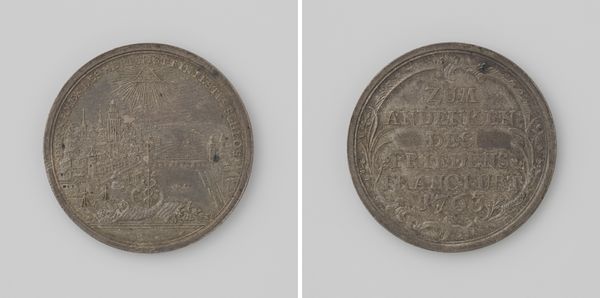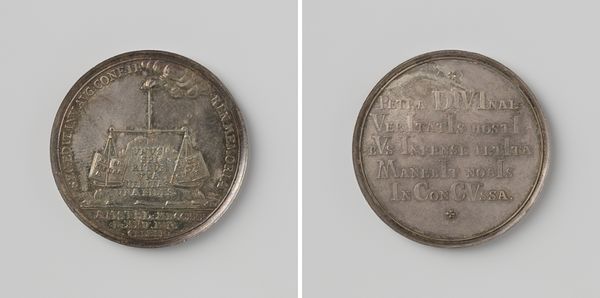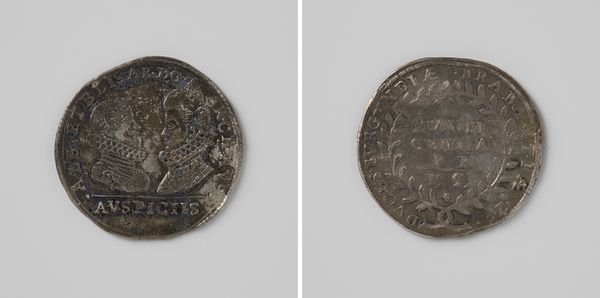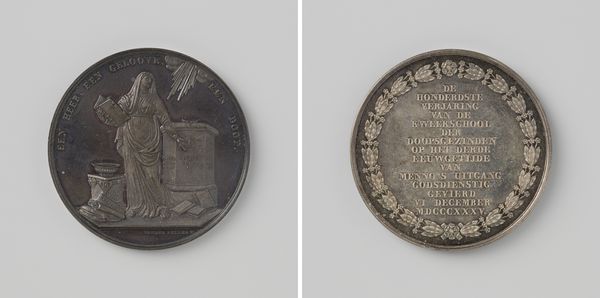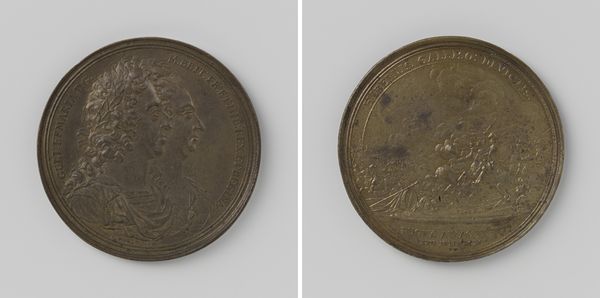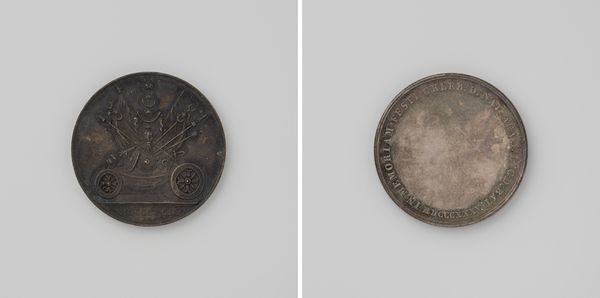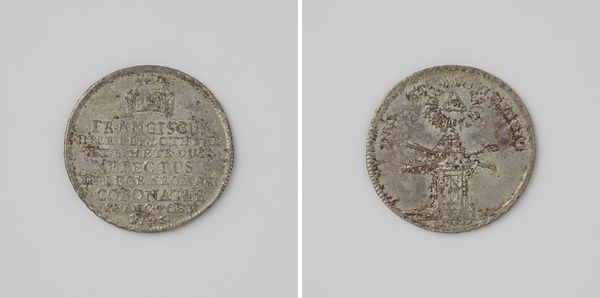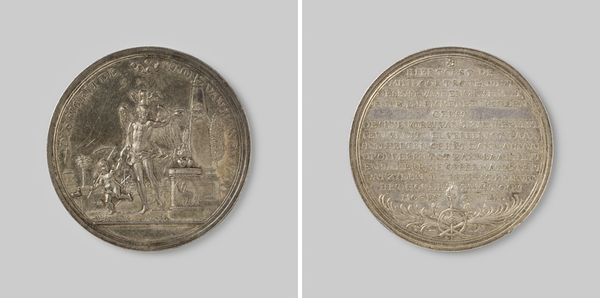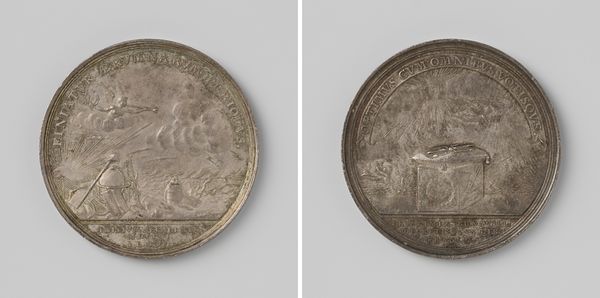
Honderdjarig bestaan van de kweekschool der Doopsgezinden te Amsterdam en driehonderjarige herdenking van het uittreden van Menno Symonsz. 1835
0:00
0:00
print, metal, engraving
#
neoclacissism
# print
#
metal
#
ceramic
#
history-painting
#
engraving
Dimensions: diameter 4.5 cm, weight 34.31 gr
Copyright: Rijks Museum: Open Domain
Curator: Here we have a fascinating piece from 1835 by David van der Kellen, an engraving on metal. The artwork commemorates the centennial of the Amsterdam Mennonite Seminary and the tercentenary of Menno Simons's withdrawal. Editor: My initial impression is one of subdued solemnity. The composition feels very formal, almost classical in its arrangement. It has an antique, venerable tone to it. Curator: Indeed. Van der Kellen was working within a Neoclassical framework here, evident in the allegorical figure of the woman and the clear, precise lines of the engraving. Note how she embodies knowledge, bearing the book and extending her arm toward the podium. The symbolism would have resonated powerfully with contemporary audiences invested in religious and intellectual life. Editor: I'm intrigued by the arrangement of objects at the lower left—are those scrolls and what seems to be a bowl or font? And the rays emanating from the top, they provide an atmospheric intensity, wouldn't you agree? The artist's composition provides depth using the light from those radiating lines to draw attention to the statue, adding a sacred, and dignified layer. Curator: Precisely. Those are likely scriptures, reinforcing themes of education, faith, and reform associated with both Menno Simons and the seminary. As for those rays of light you noticed, such radiating lights have historically been connected to the enlightenment and its dedication to science. Moreover, note the writing encircling the subject which acts to enclose the narrative presented in a beautiful symmetrical balance. Editor: I see, this gives us a glimpse into the world of 19th-century religious commemorative practices. How the values and ideals of religious organizations were framed and presented publicly, with symbolism. The piece is both elegant in technique and informative, revealing connections to educational legacy and commitment to knowledge. Curator: Precisely, and reflecting how institutional histories are built not just through texts and teachings, but also crafted through symbolic objects that bridge the past and the present. Editor: It's a compact artwork packed with social commentary. It speaks of religious identity and social structures through symbolic means. I am amazed by how much an engraving such as this manages to convey within its strict composition and material presence.
Comments
No comments
Be the first to comment and join the conversation on the ultimate creative platform.
